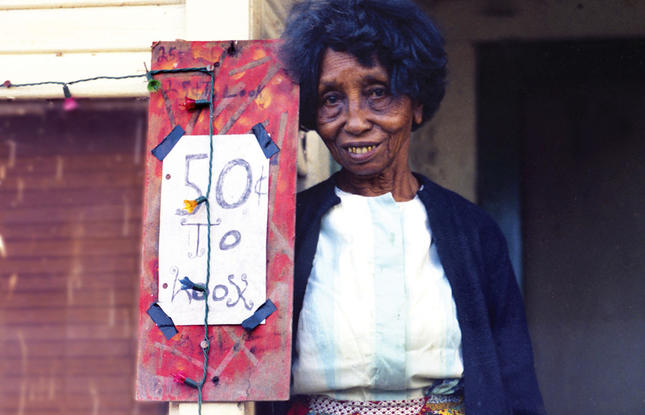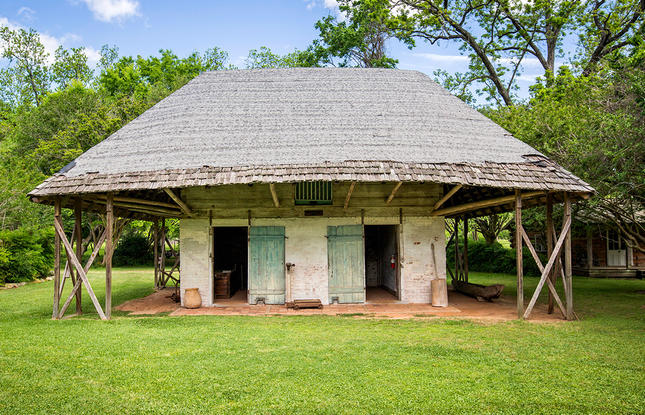The Story of Clementine Hunter, A Louisiana Icon
The rich story of Natchitoches, Louisiana can be experienced through the life story of artist Clementine Hunter.
Along the Cane River National Heritage Area in Natchitoches Parish, visitors can find several museums with artifacts and art telling the story of Louisiana’s earliest settlement and its inhabitants. These stories range from depictions of well-known historical events to portrayals of everyday life. One of the best firsthand records of the daily lives of Cane River inhabitants comes from a prominent Louisiana folk artist, Clementine Hunter.
Clementine Hunter's Roots
Born in the late 1880s, Clementine Hunter spent most of her early life working on a farm before moving to Melrose Plantation as a teenager. During the period of time she worked at Melrose, the home’s owner — Cammie Henry — hosted several artists on the grounds under the condition that the artists create or leave. One of the artists left his supplies at the home after his stay. These supplies were found by Clementine Hunter and famously used to create her first art piece. In 1955, Hunter was the first African-American artist to have a solo art show at a gallery in New Orleans and another at Northwestern State College (now University.) As an African-American, she was not allowed into the college gallery with white patrons; she had to be snuck in the back to see her own exhibition.
Clementine Hunter's Work
Hunter was a prolific painter who started in her 50s and eventually created more than 5,000 works of art literally leaving her legacy on every spare piece of flat surface available. She painted scenes from the plantation world around her: hanging clothes to dry, funeral processionals and people in her community. Using both bright colors and the size and scale of objects in her paintings, she conveyed how she felt about the people in her community (being painted bigger meant being important). Because of the vast number of paintings and her unique painting style, her artwork plays an important role in understanding life in the Cane River region during the early- to mid-twentieth century. Hunter passed in 1988 at age 100.
If you visit Melrose Plantation, head to the African American House to see the second-story with nine of Hunter's murals depicting the everyday lives and events of African Americans.
Although Hunter originally sold her artwork for as little as one dollar (or 25 cents to look through her gallery), her pieces often sell for top price today and have been featured in many prestigious art museums across the globe. The gift shop at Melrose Plantation and many shops in the National Historic Landmark District carry a variety of souvenirs with reprints of Hunter’s work. Keep an eye out for her distinctive style during your travels—she’s an #OnlyLouisiana icon!
Learn more about Clementine Hunter's legacy from the Boston Globe or learn more about the African-American Heritage Trail in Louisiana.








